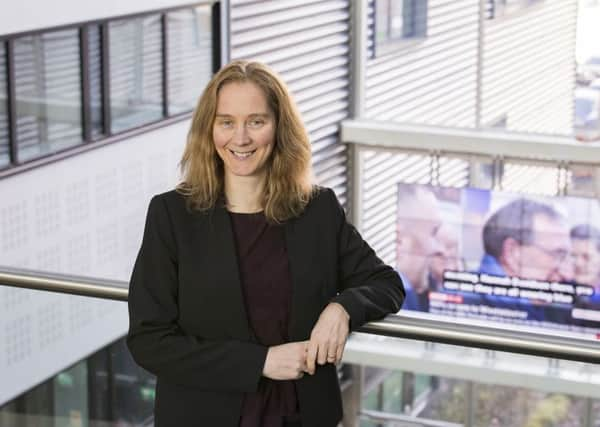Dr Coral Hanson: New year, new you – it can be done by getting physical


Keeping fit, having fun, relaxing and socialising are in themselves good reasons to embrace lifestyle changes. A further important reason is that being active helps reduce the risk of developing many common medical conditions; type 2 diabetes by 40 per cent, cardiovascular disease by 35 per cent, depression by 30 per cent, joint and back pain by 25 per cent, and breast and colon cancers by 20 per cent.
Physical inactivity is estimated to cost the NHS in Scotland around £77million annually, but no medication can reproduce all the health benefits of being active or motivate you to sit less and move more. This presents a challenge to health professionals to ‘prescribe’ physical activity.
Advertisement
Hide AdAdvertisement
Hide AdWhat should such a prescription look like? Current government guidelines advise adults to do 150 minutes (2.5 hours) of moderate activity or 75 minutes of vigorous activity per week, or an equivalent combination of both. Moderate activities such as brisk walking, dancing and gardening get you moving fast enough to increase your breathing, but you can still talk. Vigorous activities like running, fast cycling, aerobics and playing sport cause fast breathing and make it difficult to hold a conversation. Walking two miles is as beneficial as running two miles; it just takes longer.
The guidelines also advise that adults carry out strength activities at least twice a week to keep muscles, bones and joints strong. Examples are going to the gym, doing yoga or carrying heavy bags.
For those over 65, activities that improve balance like Tai Chi and bowls are also important to reduce the risk of falls. It is never too late to start being more active. Every minute counts. Doing something is good and doing more is better.
Finally, time spent sitting should be minimised and broken up with movement for one to two minutes. This might involve standing on a train or bus, walking to a colleague’s desk instead of emailing or calling, or standing or walking around while on the phone.
In Scotland, 66 per cent of adults aged 16 years and over met the moderate/vigorous activity guidelines in 2018, while 21 per cent were physically inactive (doing less than 30 minutes of moderate or 15 minutes of vigorous activity). Only 30 per cent met the muscle strengthening guideline.
So can your health professional ‘prescribe’ physical activity? One potential way is a physical activity referral scheme (sometimes called an exercise referral scheme), which typically allows inactive patients with long-term health conditions to take part in supervised physical activity for between 12 and 52 weeks.
Such schemes are widespread throughout Scotland and often provided in leisure centres, or sometimes in the outdoors through activities such as walking or gardening groups. They are a way to meet other people with similar health conditions and make a start to be more active under the guidance of qualified staff.
Although most popular with those over 55, there is currently no clear evidence about the best way to deliver these schemes. We know that participants who attend make new friends, enjoy the social aspect, increase their confidence and feel fitter.
Advertisement
Hide AdAdvertisement
Hide AdNHS Health Scotland, scheme providers such as Edinburgh Leisure and Glasgow Life, and academic researchers are working together to ensure that Scottish physical activity referral schemes are well planned and report results in a way that will help understand what aspects work best. This is good news if you have a health condition and would like some help to move more and sit less.
Edinburgh Napier University recently organised an event focusing on physical activity referrals for more than 100 people from health, leisure and academia. Delegates learned about a three-year Burdett Trust for Nursing-funded project, led by Professor Susan Dawkes, exploring how experiences of a Scottish referral scheme differed depending on gender.
The event also marked the launch of an Edinburgh Napier-led study that will engage with healthcare professionals, exercise referral providers and academic researchers to provide an international consensus statement about physical activity referral schemes. This will help to raise awareness and understanding around how to successfully promote physical activity – an important issue raised in the recent Scottish Parliament report, Social Prescribing: Physical Activity is an Investment, Not a Cost.
Can a scheme like this help you? They are not a ‘magic physical activity pill’, but they can help people unsure about what to do to make a start in a safe environment. If you would like to know more, ask your GP or local leisure centre if there is a scheme provided in your area. It could help you stick to that New Year resolution.
Dr Coral Hanson, researcher in cardiovascular health, Edinburgh Napier University.